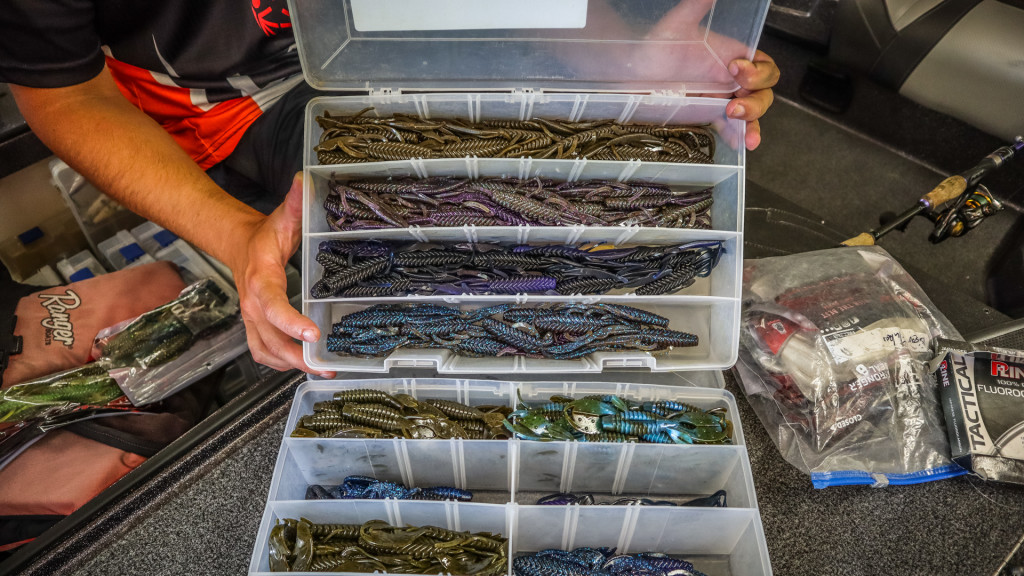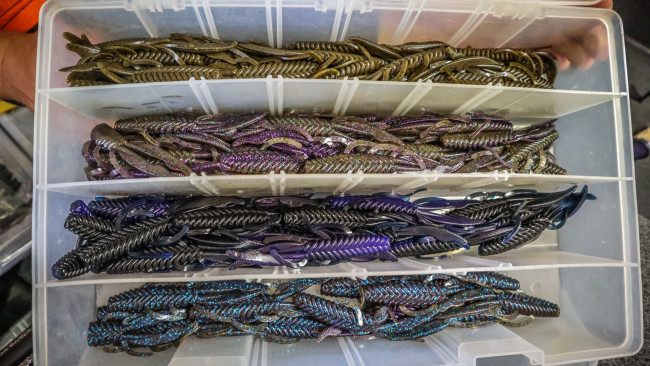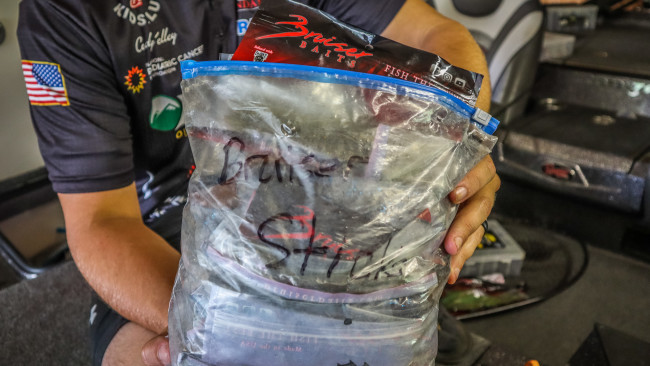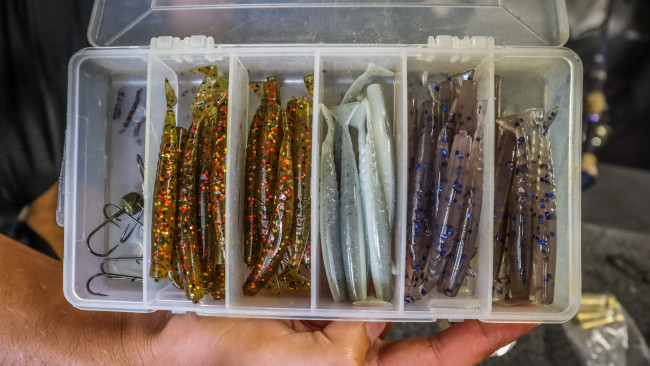4 Easy Ways to Store Soft Plastics
Bag ’em, box ’em and organize your soft-plastic baits for more efficient fishing

We’ve all heard the saying “time is money,” and it couldn’t hold truer than in competitive fishing. In a typical day, we only have eight hours on the water to make it all happen. It pays to be able to work quickly and efficiently.
One of the easiest and most controllable ways to save time and be efficient on the water is to keep tackle organized and accessible. Hard baits are easy to organize in Plano boxes, but soft plastics can sometimes cause a bit of a headache. Here are some tips for doing it based on how I go about tackling the issue.

1. Arrange go-to baits in Planos
We all have those baits that stay in the boat no matter what. For me, they are my flipping baits and baits that I can do about anything with, including the Bruiser Avenger, Bruiser Intruder and Bruiser Diamond Tail worm. I like to keep these baits handy and in the main compartment of my boat because I know I will most likely be digging some out at one point or another throughout the day.
Like many people that spend a lot of time with a few confidence baits, I have a fairly narrow color selection that works for me. I carry a lot of baits in only a few colors, but I don’t want to have bags and bags bulked up in a boat compartment. My solution is to take the baits out of their packages and neatly lay them in deep Plano 3700-series Pro Latch boxes. This method allows me to keep them very organized and accessible, and it actually saves a lot of space.

2. Bag up lake-specific plastics
Occasionally, we find ourselves going to a lake, river or region where a particular technique or bait is notorious for working really well. The Damiki rig at Cherokee Lake and other east Tennessee reservoirs and the swimming worm at Lake Okeechobee and parts of Florida are good examples.
For situations like this, I want to have all the colors and sizes needed for the technique, but I don’t need to set up permanent boxes, nor do I want to clutter up the boat with loose packages of baits. To solve the problem, I use 1- or 2-gallon zip-seal bags that are available at any grocery store.
In this case, I leave the plastics in the original packaging keep those packages in the zip-seal bags. I’ll throw a quick label on with a permanent marker and stash them in the side box on my boat.

3. Swimbaits get bagged, too
Everyone is in to the swimbait game these days. Many swimbaits, including the popular Keitech Swing Impact FAT, are packaged in blister packs to keep the baits from bending or being deformed. While the packaging itself is nice for protecting baits, it often doesn’t really stack and store easily. My solution is to file the packs away in giant zip-seal bags. I bag each size separately so I can quickly grab the two or three sizes that I need for the day or lake I’m visiting.

4. Keep specialty plastics with their terminal tackle
In some instances, it’s most efficient to store soft-plastic baits with the terminal tackle that goes with them. A Ned rig is a good example. Rather than sort through multiple boxes to rig up a new Ned bait, it makes more sense to store them in one box. This works well with the Ned rig because everything is so small. I can store my Bruiser McMinnows and Bruiser Ned Heads in one size 3400 Plano.